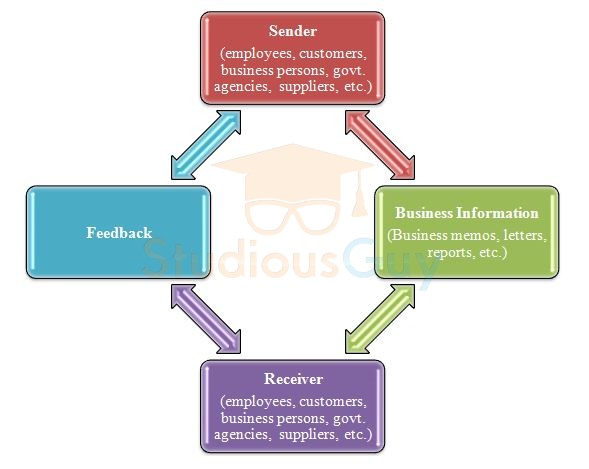Business Communication | Elements | Ways of Communication
Business Communication
Basic elements of Business communication:
- Sender
- Business Information
- Receiver
- Feedback
The above elements indicate business communication as a process in which information or news related to business is exchanged between different business parties like customers, suppliers, business clients, employees, etc. for the purpose of effective administration of the business.
Moreover, it involves a regular flow of information and feedback is considered as a crucial and important aspect of business communication. Due to different levels of hierarchy and involvement of a huge number of people, business communication plays an important role in different management functions i.e. planning, coordinating, organizing, directing, and controlling.
Types of Business Communication
Business Communication: Definition, Types, Examples, Importance, Methods, Functions
Introduction
Communication is an essential element in the success of any business. The process of transferring information from one person to another, within and outside the business environment, is termed as ‘Business Communication.’ The term ‘Business Communication’ is derived from general communication which is associated with business activities. In other terms, communication between business parties or people for business-related tasks is considered as ‘Business Communication.’ 
Definitions
Different scholars have given different definitions of Business Communication. Few of them are mentioned below:
According to Ricks and Gow defined Business Communication as a system that is responsible to affect change throughout the whole organization.
According to W.H. Business Communication is exchanging business-related different views, ideas, and news within the related parties.
Prof. J. Haste stated that when the communication occurs between either two or more than two business people for the purpose of effective organization and administration of business then it is considered as Business Communication.
Effective business communication is the way employees and management communicate to achieve organizational goals. The objective is to improve organizational efficiency by reducing mistakes. Business Communication includes different aspects like marketing, public relations, customer relations, corporate and interpersonal communication, etc.
Basic elements of Business communication:
- Sender
- Business information
- Receiver
- Feedback
The above elements indicate business communication as a process in which information or news related to business is exchanged between different business parties like customers, suppliers, business clients, employees, etc. for the purpose of effective administration of the business.
Types of Business Communication along with Examples
There are 4 main types of business communication in any organization or business i.e.
1. Internal Business Communication
Internal Business Communication means communication that occurs within the members of the organization. This communication includes both formal and informal communication. Also, different departments that transmit communication by different means to employees come under internal communication.
It is further categorized as internal (upward) communication and internal (downward) communication.
a. Internal (Upward) Communication: This type of internal communication involves the bottom to the top management approach. Here, the information flows from subordinates to managers or any person that is on the upper in the hierarchy level.
b. Internal (Downward) Communication: In downward communication, the information flows from the top-level management to the employees in an organization. This information is related to passing on instructions to subordinates or employees to do their respective tasks. Downward communication is being used by managers to communicate different goals, procedures and policies, guidelines, decisions, instructions, etc. to their subordinates.
2. Horizontal/Lateral Business Communication
Lateral or horizontal communication is related to communication among co-workers i.e. either verbal communication or written communication. This may include inter-departmental communication or communication between cross-departments and can be between people of the same or similar rank in a company. This is a crucial communication to achieve the desired results. So, this communication happens among employees having an equal hierarchy level.
3. External Business Communication
Communication with people who are external to the organization is known as external business communication. These people can be customers or shareholders or suppliers or partners or regulatory bodies, etc.


Comments
Post a Comment